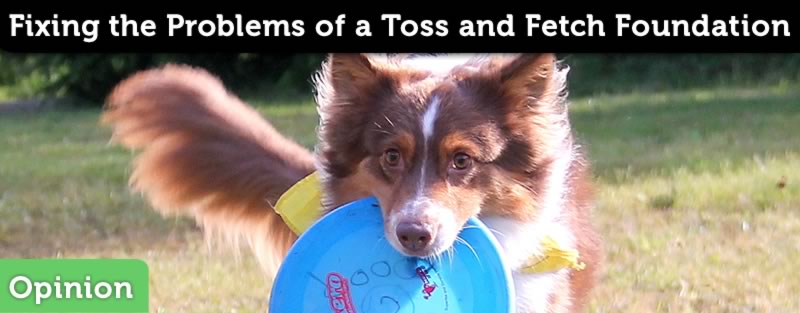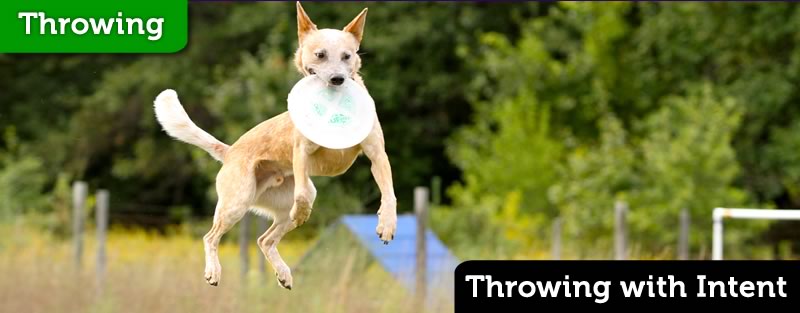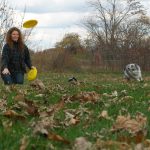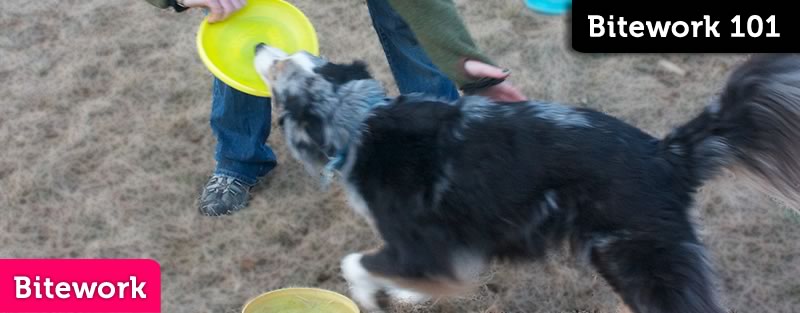
From Controlled Chaos to Purposeful Play
Bitework for Behavior
First off, Tugging is not Tug of War.
Tug of War is about ownership and control over an object – to the victor go the spoils.
This is probably the biggest mistake people make when trying to understand the game of Tug. Anyone who talks about Tugging being unsafe, or “Never let your dog win!”, or tries to force behaviors on their dog in order to ‘make them behave’ during a game of tug is probably confusing Tugging with Tug of War.
Tugging has nothing to do with dominance or aggression.
Tugging is personal interaction between human and dog that increases drive and creates a spirit of sharing and teamwork. It has a host of other benefits that would seem to be unrelated as well.
Tugging can be used to get a reliable drop, a fast retrieve, a great recall, and can be used to get a handle on dogs with out of control prey drive – pretty much everything that a host of experts have historically said Tugging destroys.
The Evolution of Tugging in Dog Sports
Flyball handlers have, for some time, used tugging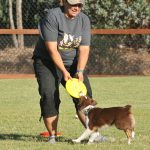 Bitework is an activity or a game that consists of biting and dropping a toy on cue. Cued Bites and cued Drops (and Gives) can be used to teach and reinforce many behaviors.... More as a motivational force for their dogs. Tugging is the reward for flyball dogs. Carrying the ball, jumping the jumps and hitting the box are the behaviors required to earn that romp with their handlers. The desire to tug will make the dogs run faster and faster and also gives the dog a reason to stay with the handler at the end of a run.
Bitework is an activity or a game that consists of biting and dropping a toy on cue. Cued Bites and cued Drops (and Gives) can be used to teach and reinforce many behaviors.... More as a motivational force for their dogs. Tugging is the reward for flyball dogs. Carrying the ball, jumping the jumps and hitting the box are the behaviors required to earn that romp with their handlers. The desire to tug will make the dogs run faster and faster and also gives the dog a reason to stay with the handler at the end of a run.
The entire game of flyball has been developed around tugging for drive.
Agility handlers have taken that tugging for drive developed by flyball folk and added an additional wrinkle to the game; position.
In addition to being a motivator, the tug is used as a target that the dog drives to either on the field or on their person. Handlers can lay the tug on the ground on the other side of a piece of equipment and let the gravitational force of the tug pull their dogs to a particular spot Spot is a “go to a place”, or “go to a mat” behavior. This means that the dog seeks out and performs a duration behavior on a spot of the handler’s choosing. A... More on the field. Handlers can also throw the tug in a particular direction to help simplify complex or difficult directional cues. It can also be wielded on the person, either on the right or left side to get or keep the dog in positional sync with the handler.
Spot is a “go to a place”, or “go to a mat” behavior. This means that the dog seeks out and performs a duration behavior on a spot of the handler’s choosing. A... More on the field. Handlers can also throw the tug in a particular direction to help simplify complex or difficult directional cues. It can also be wielded on the person, either on the right or left side to get or keep the dog in positional sync with the handler.
In Frisbee, tugging is not only used to build drive, to reinforce behavior and establish position, but tugging actually creates behavior.
Tugging for Behavior
Tugging in the hands of an experienced trainer can create many behaviors that we want and need from our performance dogs.
- Tugging can be used to teach a drop
- Tugging can be used to teach a retrieve
- Tugging can be used to teach patience.
- Tugging can be used to create operant drive.
Tugging for behavior requires quite a bit more than simply fighting your dog for control of an object. That is tug of war and that kind of tugging will give you nothing but problems. What we want to do is set up clear and consistent rules for this game. There are only 3 hard and fast rules in tugging, and as long as the rules are followed the game continues.
3 Rules of Tugging
- Don’t Touch Me!
- I tell you when to bite.
- You release when I tell you.
Don’t Touch Me
This is the most important rule of all. Our dogs are simply not allowed to make mistakes when it comes to accidently biting flesh. They do too much biting around our hands to be sloppy. There is no reason for your dog to miss a tug and bite you other than carelessness.
If you happen to be working with a Malinois, Rotty or Shepherd, an errant bite means hand surgery.
Any time you are touched with teeth while tugging, no matter how insignificant, you need to quit the game entirely and take a break.
I Tell You When to Bite
It is very dangerous to have a dog that strikes at objects whenever they are available.
Out of control prey drive is a serious problem with some dogs, and again the results can be catastrophic. It’s one thing for a handler to get mauled by their dog while holding an object, but it’s quite another for a young child or a pedestrian to get whacked by an out of control dog in search of something to bite.
If your dog bites without being asked, stop the game for a moment. If it happens repetitively, quit the game entirely.
You Release When I Tell You
Rule #3 must be taught before it is enforced, but once it is known and understood, it should be enforced by stopping play momentarily or quitting entirely.
In tugging, we are really turning on our dog’s drive. I have read that tugging is like sharing a kill. It seems like that could be the case, but regardless, we are activating something pretty primal in our dogs. We are turning them on; allowing them to bite hard and rip and tear. When we engage the dog in tugging, it is very important that our cue to release is always followed if it’s not followed the game stops.
Setting up the Game of Tug
Start with two equal value targets – same size, shape, color and degree of wear. Choose something that the dog likes to play with and that gives both dog and handler the space they need to hold. Using too small an object to start will make it likely that teeth and hand will touch, and that’s not fair to either dog or handler.
Be sure that the area you choose to play this game is relatively small, ensuring that the dog can’t take off for victory laps with one of the objects, and that it’s free and clear of distractions.
Remember Rule #1 Don’t Touch Me!
Playing the game of tug starts with rule #2, ask your dog to bite the target. If you have a dog that has no interest in toys, there are techniques to help them enjoy the game, but that is beyond the scope of this article.
So we ask our dog to bite the target, and then we wrestle a bit with them. The goal is to have them remove the object from your hand. We set this goal at an easy to achieve but challenging level.
That’s right, we’re going to let the dog win – over and over.
Shaping the Retrieve
Once the dog has won, try walking backwards. If the dog comes to you carrying the toy, praise him and see if you can grab the object again and start tugging. If you do get it, tug a bit then let him win.
It should not take too long before his winning and your walking backwards triggers his desire to bring the toy to you. If he brings it near your hand, snatch the target, tug and let him win again. Your dog is learning that bringing an object to you means more playing.
Repeat this a few times and you’ll have the foundation of a retrieve.
Shaping the Drop
Once we’ve got the foundation for a retrieve, or if your dog did not approach as you backed up, just let him win and wait.
What we are waiting for is for the dog to drop the object. As soon as the dog drops the object, we’ll mark the drop,”Yes!” and pop the other target out and ask them to bite it.
When the dog bites, tug just enough to keep it challenging then let him win, a second or two at the most, then wait for the drop. MarkShort for “Positive Marker”, a Mark is a word or signal given at the exact moment a desired behavior is performed. It’s like a clicker. Mark can also mean the act of marking... More and reward with a bite on the second object.
Adding the Drop Cue
Repeat this several times and you should notice that the dog starts to drop the object faster and faster, and in no time, it ceases to be about winning the target from the handler and starts to be about the next bite. You’ve just taken the value out of winning and laid to waste 30 year argument that says tugging is dangerous.
This is shaping the drop. Once it’s happening readily and you can predict the drop and bet $100 that it’ll happen right now, add the drop cue. The hundred dollar bet is important because you must be sure that a cued behavior is very likely to happen.
If the dog doesn’t drop right away on cue, just wait, it’ll happen. If it doesn’t happen readily, shame on you just lost $100. Go back to shaping the drop without the cue until that $100 bet is a sure thing.
Once the dog has a firm understanding of the drop cue, you can up the ante and start to work on playing the game with Rule #3 in effect.
Shaping the Shared Drop
The first thing that needs to be done is to create a pattern.
Bite, dog wins, Drop, “Yes!” Bite, dog wins, Drop, “Yes!” 7-10 times in rapid succession… say less than 10 seconds.
Then you will go limp, mid tug, and try to be as boring as possible until the dog drops. Hold the target as loosely and as lamely as possible while still maintaining control over the object. Think dead fish… boring… yawn…
The moment the dog drops, give a positive marker “Yes!” immediately followed by a another bite or a toss of the target. You can alternate between another bite and tossing the object as a reward. The toss and bite keep things interesting for the dog and prove that nothing is lost while dropping a shared toy.
Rarely, is it not possible to wait a dog out on the drop. People often say,”I waited 10 minutes!” when in reality they waited 10 seconds. Be patient.
The longer the object is being held in a lame and not exciting fashion, the longer the dog is missing out on that fun game of tug. The long battles of will really teach the greatest lessons. The contrast of 2 minutes spent hanging on to a lame, static dead fish toy with a raucous game of tug is the lesson.
If the dog tears the object out of your hand, stop the game for a moment, and wait maybe 10 or 20 seconds. Then ask for the bite again and give it another shot – 7-10 rapid fire reps then that dead fish hold.
Once that drop starts to free up and you can bet $100 that it’ll happen now, drop your cue on it.
Once this lesson is learned, the game of tug is ready to roll.






